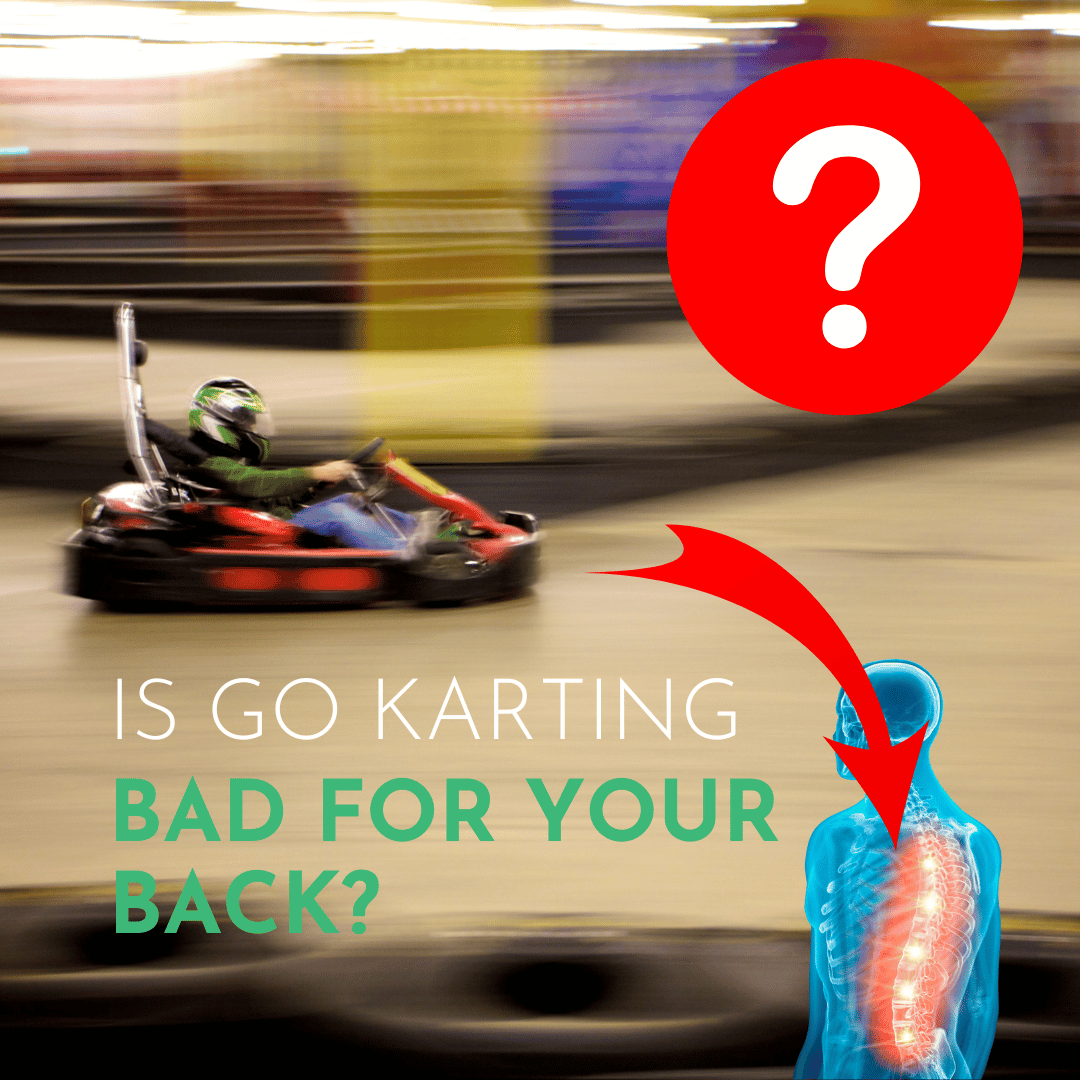Is Go Karting Bad For Your Back?
Updated: 14.4.25
There's a rumour doing the rounds: go-karting might just be the arch-nemesis of your back.
Seems a bit unfair, right?
There you are, ready for some fast-paced fun, only to worry about ending up with a painful reminder of your karting capers. 
If you've ever thought "Why does my body hurt after go-karting?" — you're not alone.
But before we start waving the white flag, let’s break down the facts.
Are you strapping into a world of hurt, or is this all a bit of a misunderstanding?
Is Go Karting Bad For Your Back?
In short: not inherently, but it can be.
Go-karting, while an adrenaline-fuelled activity, can place strain on the body — especially the back and neck. Minor muscle tears and soreness are common, particularly in beginners. More serious issues like bruising or even sciatica can occur after collisions or poor driving posture.
That said, with proper posture, warm-ups, and a well-maintained kart, the risks are minimal — and the rewards are massive.
The Thrill & The Risks
Like most motorsports, go-karting is exhilarating but physically demanding. That demand doesn’t stop at your arms and shoulders — your spine takes a hit too, especially when racing on bumpy tracks in low-seated positions.
Most Common Issues
- Post-race soreness (especially shoulders and neck)
- Lower back tension from seat vibrations
- Neck fatigue from sustained G-forces on corners
More Serious Concerns
- Sciatica or lower back flare-ups
- Muscle strain or bruising after crashes
- Poor posture leading to pinched nerves or stiffness
How to Reduce Discomfort
✔️ Stretch Before & After
Stretching improves flexibility and circulation, helping prevent cramps and stiffness. Here’s a great post-karting recovery video:
✔️ Sit Right!
Posture matters. Keep your back flat against the seat, shoulders relaxed, and engage your core when cornering. Adjust your seat so you're not straining to reach the pedals or steering wheel.
✔️ Wear the Right Gear
Helmet? Always. Gloves and rib protectors? Even better. Proper karting gear adds comfort, stability, and protection from impact.
✔️ Build Your Core
Regular core workouts like planks, sit-ups, and yoga can seriously boost your endurance and reduce back fatigue while racing.
Adaptation Over Time
The more you kart, the more your body adjusts. Just like any physical sport, regular practice builds muscle endurance, posture memory, and resilience against aches and pains.
Conclusion: It's All About Balance
Is go-karting bad for your back? It can be — but only if you ignore your body’s needs and neglect safety practices.
Think of karting as a workout: if you prepare well and pace yourself, it’s thrilling, healthy fun. But jump in unprepared, and you might leave sore for days.
So warm up, sit right, wear the gear — and embrace the corners with confidence.
FAQs
How long does karting-related soreness last?
Usually 1–3 days. If it lasts longer or worsens, consult a physiotherapist.
Can go-karting improve fitness?
Yes! It engages core, arms, neck and legs — and builds stamina over time.
Do beginners need training?
Not mandatory, but very helpful. Most tracks offer safety briefings and tips for first-timers.
What exercises help with karting endurance?
Focus on core strength (planks, sit-ups), neck mobility stretches, and general cardio (cycling, swimming).





Share:
What Age Is Too Late To Start Karting?
Do Go Kart Tyres Have Tubes?